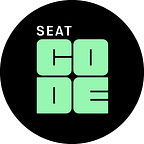From Data to Hardware, a Journey Through Strategy, Innovation, and Curiosity
Marc Masllorens studied industrial engineering and has a deep passion for automotive, aeronautics, and general mechanics. However, as he progressed in his career, he realized that beyond pure mechanics, there was immense potential in data analysis and information and communication systems.
This revelation became particularly clear during his master’s program in Munich. There, his final project was to develop an optimization model for a component’s lifecycle used in the automotive industry.
“Despite the apparent complexity of the topic, the project was about determining the most efficient combinations of parts, thus simplifying the demand and reducing the resources needed in the manufacturing process.”
Marc describes this experience as a “perfect match”, where he saw the intersection between heavy industry and data analysis. After completing his master’s, he returned to Barcelona and began working at SEAT in the IT department. “After 12 months as a graduate trainee, I became the assistant to Sebastian Grams, the company’s CIO. This happened at the end of 2019, so I witnessed and participated in the inception of the Seat Code project.” In those early days, SeatCode consisted of 20 professionals, far from the 300 that make up the company today.
After that, Marc went to Audi Sport, where he continued to learn about other areas of the industry beyond the pillar of digitalization. “I learned a lot about the business of manufacturing and selling cars, which I didn’t know before, but always combining it with activities related to innovation and digitalization projects.”
But he eventually returned to Barcelona, and it couldn’t be to any other place than Seat Code, where he currently holds the position of Innovation and Strategy Manager.
“I know the company well and knew I would feel comfortable coming back here. I have a good relationship with my colleagues, and I can think of no better places to carry out the role of strategy and innovation manager.”
To define Seat Code, Marc uses a definition he knows by heart.
“I always say it’s SEAT SA’s digital machine, which aims to impact SEAT and CUPRA’s value chain and create an optimal user experience for the end customer.”
From the screw to the customization website
But to understand that theoretical explanation, Marc explains what the footprint of the work is, for example, on a Cupra Formentor, one of the brand’s flagship models.
“Currently, SEAT CODE does not have a direct impact on the car’s design itself. But we are responsible for everything related to the experience before acquiring the Formentor. We created the interface to configure the car through the website or app. Also, any information you check on your mobile about the vehicle, like the battery level, has also been developed by us”.
Our specialty focuses on enhancing the driving experience. Although we are not present inside the vehicle, we play a crucial role in online sales channels and optimizing various processes throughout the car’s value chain. While the end customer may not directly perceive it, areas like SEAT SA’s finance or logistics benefit greatly from our interventions, especially in optimizing inventory management.”
“We have also contributed to improving some manufacturing processes. A notable project was predictive maintenance for welding clamps. We analyzed historical data from certain robots under specific conditions to predict and notify operators about potential failures, thus minimizing downtime due to breakdowns or precision errors.”
This makes it clear that SeatCode plays a key role that affects everything from the screw to the website where the user shapes their future car.
The word “curiosity” heads the description of Marc in the “about” section of his LinkedIn profile.
“It wasn’t intentional to write it that way, but now that you mention it, yes, ‘curiosity’ is a term I feel defines me quite well, both personally and professionally. Throughout my career, I’ve always been driven by the need to learn new things.
If there’s something I don’t know how it works, I research or ask. It’s true that I’m also drawn to the idea of finding solutions to well-defined problems, but I do like facing challenges that present a high degree of uncertainty and push me to learn and think outside the box.”
